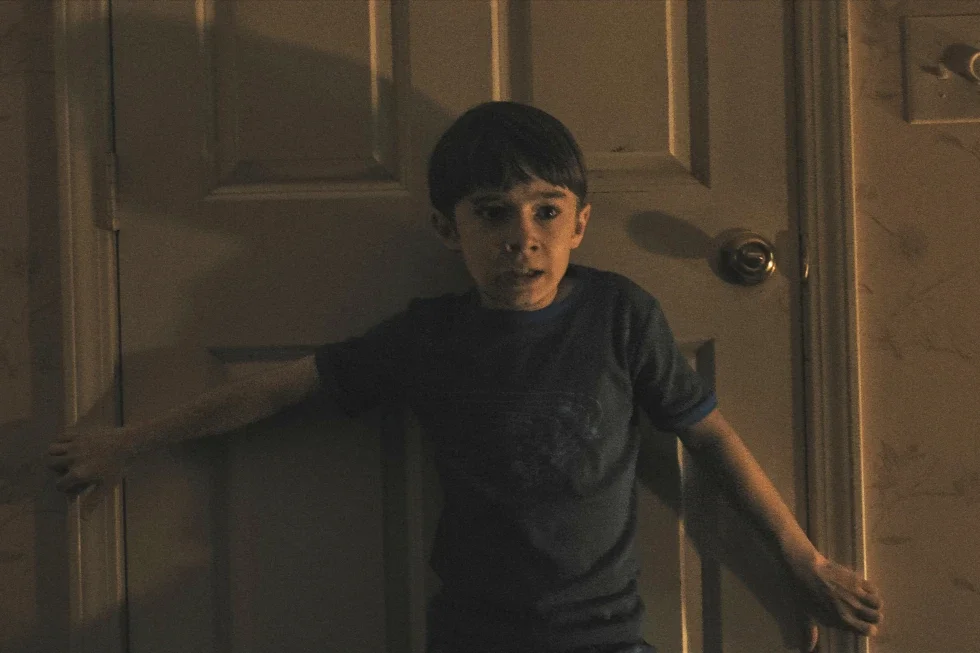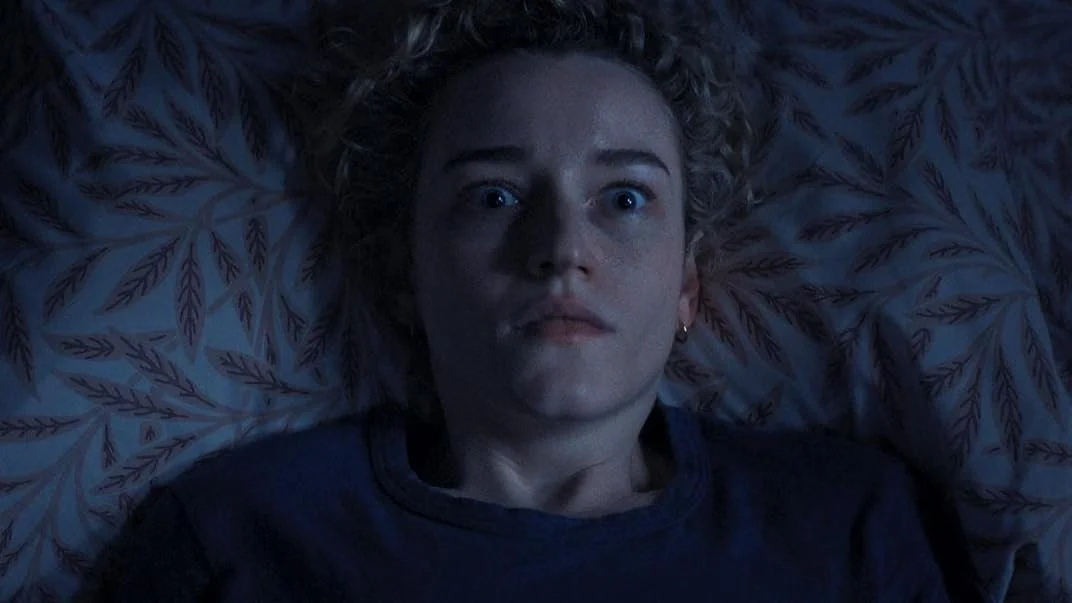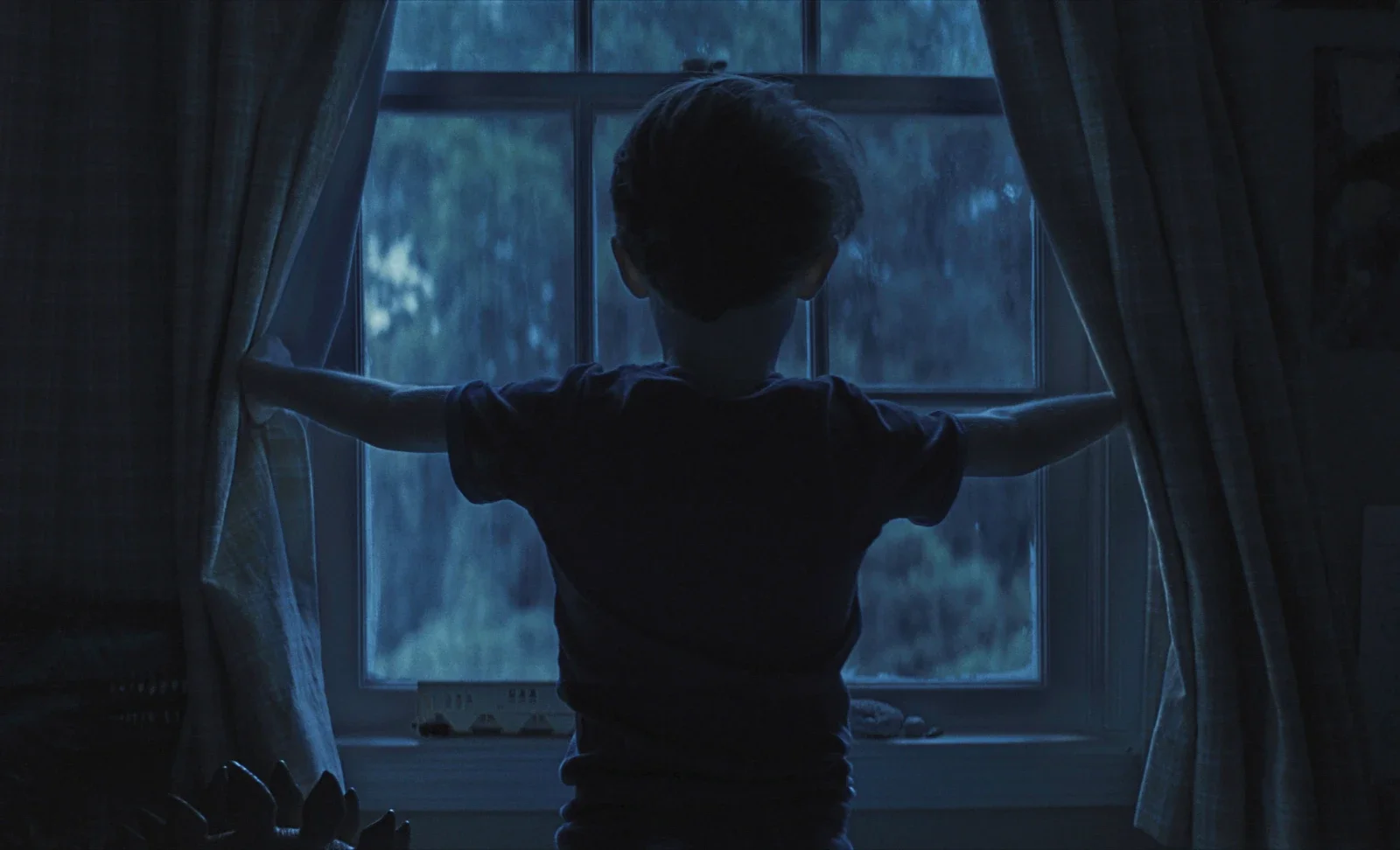There’s a moment early in Weapons, the kind that etches itself into your mind long after the credits roll, where seventeen children silently flee their homes at exactly 2:17 a.m., arms outstretched like birds in flight. Set to George Harrison’s haunting “Beware the Darkness,” this chilling image encapsulates everything writer-director Zach Cregger brings to the table: dread, elegance, mystery, and an unshakable grip on the surreal. Welcome back to the twisted fairy tale logic of one of horror’s freshest voices.
Following up his genre-defining Barbarian, Cregger returns with Weapons, a bold, unsettling genre-bender that feels part Magnolia, part Brothers Grimm nightmare, only the Grimm versions your parents never told you about. Told in interwoven chapters from various character perspectives, Weapons begins with a slow burn and builds to a truly brain-melting climax, blending mystery, horror, and emotional gut punches into a fully realized fever dream of paranoia and grief.
Premise & Structure
The core mystery revolves around a classroom of children who vanish in the night, all but one. Julia Garner delivers a layered performance as Justine Gandy, the haunted schoolteacher left behind to make sense of the inexplicable. Cary Christopher plays Alex Lilly, the lone student who remains, acting as both a key to the puzzle and a constant source of unease.
Josh Brolin grounds the film as Archer Graff, the grieving father of one of the missing children. His chapter, a wrenching portrait of parental despair, is perhaps the most emotionally devastating in the film. One scene in particular, featuring a door-mounted POV shot during a high-tension moment, is a masterclass in immersive horror filmmaking. Brolin’s restrained rage and sorrow make this section the emotional heart of the movie.
Each segment, introduced by the name of the character it follows, slowly unspools the mystery, offering “crumbs” that eventually form a larger, horrifying picture. While some viewers may feel the narrative dips into surreal or unexpected territory, the film’s structure never buckles. In fact, the pacing is damn near perfect. Each chapter reveals just enough to keep you locked in, and the rhythm of reveals, character arcs, and scares flows with confident precision. Cregger masterfully keeps tension taut without rushing to the payoff, trusting the audience to follow him through the dark.
Performances & Characters
Garner is captivating, balancing fragility and fierce determination. You feel Justine’s isolation with every knock on the door or ring of the phone — the town slowly turning against her in its desperation for answers.
Alden Ehrenreich also impresses as Paul Morgan, a cop and former flame of Justine’s, oozing fractured intensity with just the right dash of Jack Nicholson energy. Amy Madigan’s turn as the elusive Gladys Lilly, the film’s spectral antagonist, is a revelation. Think: a cross between Tiny Tim and Patricia Arquette, filtered through The Babadook’s unnerving ambiguity. She disappears and reappears in flashes throughout the film until her true role is revealed in a way that reframes much of what came before.
Toby Huss once again steals every scene he’s in, this time as a grizzled police captain (and Paul’s father-in-law). Austin Abrams shines in his most unpredictable role yet, as a junkie named Anthony whose chaotic energy injects a needed jolt into the film’s quieter moments.
And yes, fans of Barbarian will be delighted to see a brief but memorable cameo from Justin Long, reminding us that no Creggerverse film is complete without a little twisted humor.
Tone, Direction, and Style
Cregger is a wizard with lighting and space, crafting liminal, eerie environments that make you flinch at every silence. Like Barbarian, Weapons turns the mundane into the terrifying. Empty neighborhoods, flickering hallways, and even cans of chicken noodle soup are all weaponized for maximum unease.
Dream sequences nod to Nightmare on Elm Street. At the same time, the inventive camera work, especially one moment where a camera appears mounted on a swinging door, adds a kinetic tension that pays off during the final 20 minutes. The climax is graphically violent, stylishly choreographed, and deeply disturbing. You’ll never look at a potato peeler the same way again.
The score by Ryan and Hays Holladay, alongside Cregger himself, elevates the film’s mood with a blend of dissonance and melody that wraps around scenes like a noose. Warner Bros.’ soundtrack choices, particularly the eerie use of Harrison, further ground Weapons in emotional disarray.
Themes and Final Thoughts
Beyond its scares, Weapons wrestles with weighty questions: How far would you go for your child? Can we ever cope with the unexplainable? Do we only believe in monsters when they take something from us?
In a genre bloated with clones and IP reboots, Weapons feels genuinely original, even when it embraces the surreal or absurd. Some moments veer into bizarre, even cartoonish territory (there’s a Looney Tunes-style chase that somehow still works), but nothing ever feels out of place thanks to the story’s dreamlike logic and consistent tone.
This isn’t just a horror movie. It’s a meditation on trauma, forgiveness, and the horror of unanswered questions. It doesn’t haunt with screams or gore, but with silence. With what it chooses not to explain.
Verdict
Zach Cregger has officially proven he’s no one-hit wonder. With Weapons, he’s cemented himself as one of horror’s most vital new voices. If Barbarian was a terrifying surprise, Weapons is a haunting follow-through. It’s creepy, tragic, weird, and unforgettable.
Jessie Hobson






